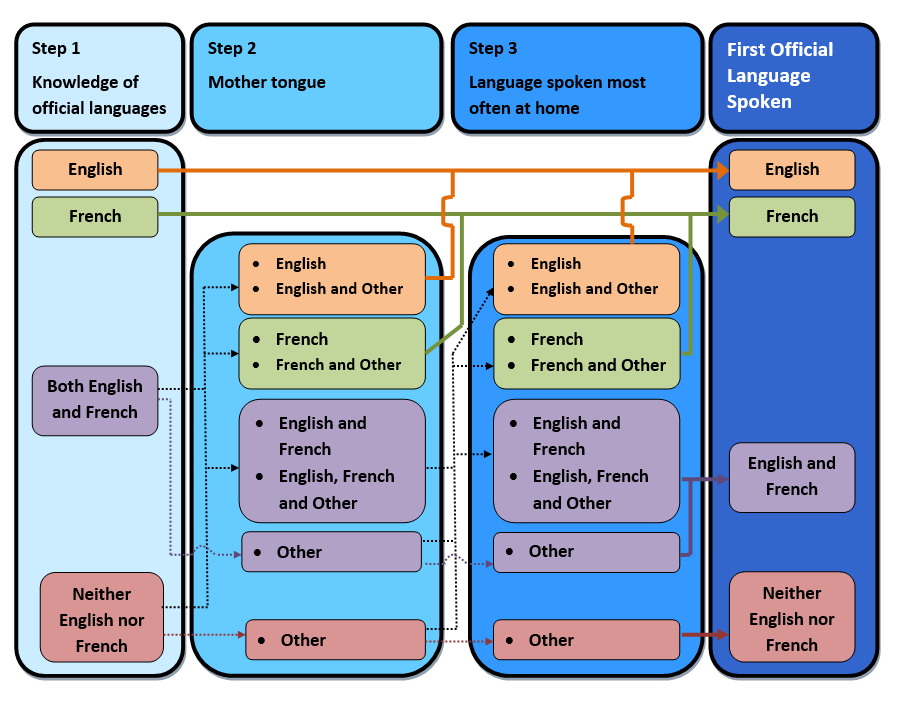
Description for Figure 1 Derivation of the First official language spoken
Figure 1 is a graphical representation of how the first official language spoken is derived. Each step in the three step derivation is represented by a column, with the fourth column representing first official language spoken. The three steps of the derivation each take into account a specific language variable. Each of these columns is represented by two boxes. The top row indicates which step in the derivation is being indicated in the larger box below.
Each of the large boxes include smaller boxes representing responses to the question posed for its respective language variable. Each of these smaller boxes are connected to a box in a column to the right.
The first column represents step 1 of the derivation, knowledge of official languages. The second column represents step 2 of the derivation, mother tongue. The third column represents step 3 of the derivation, language spoken most often at home. The designation ‘other’ indicates (a) language(s) other than the two official languages, English and French.
If a person responds ‘English only’ in step 1, the question on knowledge of official languages, they are assigned ‘English’ directly (that is, skipping the second and third derivation steps) as their first official language spoken. Similarly, if a person responds ‘French only’ to the question on knowledge of official languages, they are assigned ‘French’ directly (that is, skipping the second and third derivation steps) as their first official language spoken.
If a person responds ‘English and French’ to the question on knowledge of official languages, they proceed to the second step of the derivation, the question on mother tongue. If a person responds either ‘English’ or ‘English and other’ to the question on mother tongue, they are assigned ‘English’ directly (that is, skipping the third derivation step) as their first official language spoken. If a person responds either ‘French’ or ‘French and other’ to the question on mother tongue, they are assigned ‘French’ directly (that is, skipping the third derivation step) as their first official language spoken. If a person responds either ‘English and French’, ‘English, French and other’ or ‘Other’, they proceed to the third step of the derivation, the question on language spoken most often at home.
If a person responds ‘Neither English nor French’ to the question on knowledge of official languages, they proceed to the second step of the derivation, the question on mother tongue. If a person responds either ‘English’ or ‘English and other’ to the question on mother tongue, they are assigned ‘English’ directly (that is, skipping the third derivation step) as their first official language spoken. If a person responds either ‘French’ or ‘French and other’ to the question on mother tongue, they are assigned ‘French’ directly (that is, skipping the third derivation step) as their first official language spoken. If a person responds either ‘English and French’, ‘English, French and other’ or ‘Other’, they proceed to the third step of the derivation, the question on language spoken most often at home.
Source: Statistics Canada, 2015.